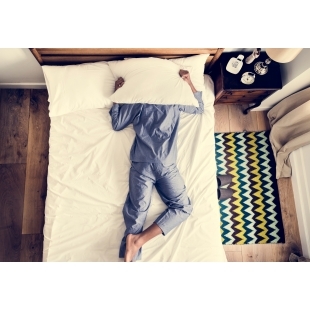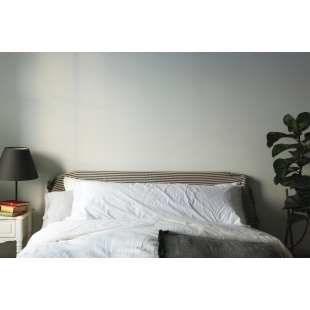All Material
-

Mattress Protector Recommendations | Functions, Benefits, Prices, and How to Choose the Best One
Nowadays, many people use a mattress protector to keep their mattress clean and hygienic—essentially like putting a protective shield on their bed.
But which type of mattress protector is the best? Should you choose a flat sheet style, fitted sheet style, or full-encasement protector? With so many options available at different price points, how do you choose the right mattress protector?
What is a Mattress Protector and Why Use One?
The idea behind mattress protectors originated from sanitary pads. Women may experience unexpected periods while sleeping, which can stain clothing and mattresses.
Since bedding materials prioritize comfort over waterproof and absorbent properties, waterproof mattress protectors were developed.
A waterproof mattress protector not only prevents period stains from seeping into the mattress but also blocks sweat, dead skin, body oils, and spills from children or pets. It is highly recommended to protect your mattress and extend its lifespan.
Where Do You Place a Mattress Protector? Above or Below the Bed Sheet?
A mattress protector is a functional layer placed between the fitted sheet and the mattress.
It prevents liquid penetration while absorbing dirt and moisture, keeping the mattress clean and fresh.
Using a waterproof mattress protector is one of the easiest ways to maintain your mattress and extend its lifespan effectively!
Types of Mattress Protectors | Price & Differences
There are three common types of mattress protectors:
Flat Sheet Style
Fitted Sheet Style
Full Encasement Style
The main difference is how they are secured to the mattress.
Feature
Ease of Use
Protection Level
Price
Recommendation
Flat Sheet Style
Easy to put on and remove
Low – only protects the top surface; may shift easily
Low
★
Fitted Sheet Style
Easy to use and stays in place
Good – protects the top and sides
Medium
★★★
Full Encasement Style
Hard to install and remove
Excellent – 360° protection
High
★★
1. Flat Sheet Style Mattress Protector
Price Range: Low
Description: Covers only the top surface of the mattress and is secured with elastic straps at the four corners.
Downside: No side protection, prone to shifting and misalignment due to movement during sleep.
Durability Issue: Elastic straps may tighten over time, causing mattress corner deformation and potential strap breakage after long-term use.
2. Fitted Sheet Style Mattress Protector
Price Range: Medium
Description: Similar to a fitted sheet, this protector wraps around the mattress with elastic bands securing it in place.
Advantage: Provides better side protection, prevents shifting, and is easy to put on and remove without lifting the mattress.
Best Choice: Fitted mattress protectors strike the perfect balance between convenience and protection, making them the most recommended option.
3. Full Encasement Style Mattress Protector
Price Range: High
Description: Works like a protective jacket for your mattress—completely enclosing it with a zipper closure for 360° protection.
Downside: Difficult to install and remove, making washing inconvenient.
Best For: Highly contaminated mattresses or those requiring complete isolation from allergens, dust mites, or bed bugs.
Not Recommended: For general home use, unless full protection is necessary.
By understanding the different mattress protector types, you can now choose the best one for your needs. While higher-priced options offer better comfort, they also require extra care to maintain durability and performance.Mattress Protector Recommendations | Functions, Benefits, Prices, and How to Choose the Best Onemore -

Double Bed Sizes | Standard, Queen, and King Size Mattress Dimensions
Due to differences in average height and measurement units across countries, the dimensions of double beds vary slightly worldwide. Below is an introduction to the double bed specifications in Taiwan and other countries.
Common Double Bed Sizes in Taiwan
In Taiwan, the most common double bed sizes include:
Standard Double Bed
Queen Size Bed
King Size Bed
Taiwan typically uses "Tai Chi" (台尺) as a measurement unit, where 1 Tai Chi = 30.3 cm.
Taiwan Standard Double Bed Size Chart
Taiwan Double Bed Size
Common Name
Width × Length (Tai Chi)
Width × Length (cm)
Area (Ping, 坪)
Standard Double Bed
5-Chi Bed
5' x 6.2'
152 x 188 cm
0.86 坪
Queen Size Bed
6-Chi Bed
6' x 6.2'
182 x 188 cm
1.03 坪
King Size Bed
7-Chi Bed
6' x 7'
182 x 212 cm
1.17 坪
Descriptions of Each Size
Standard Double Bed (5-Chi Bed): 152 cm (W) × 188 cm (L), the most commonly used double bed size.
Queen Size Bed (6-Chi Bed): 182 cm (W) × 188 cm (L), closer to a square shape, also known as Queen Size.
King Size Bed (7-Chi Bed): 182 cm (W) × 212 cm (L), also referred to as King Size.
IKEA Double Bed Sizes (European Standard)
Since the average height of Europeans is higher, European double bed sizes tend to be longer than those in Taiwan.
IKEA Double Bed Size Comparison
Taiwan Double Bed Size
Width × Length (cm)
IKEA European Double Bed Size
Width × Length (cm)
Standard Double Bed
152 x 188 cm
140 x 200 cm
150 x 190 cm
150 x 200 cm
Queen Size Bed
182 x 188 cm
180 x 200 cm
MUJI Japan Double Bed Sizes
In Taiwan, one of the most well-known Japanese mattress brands is MUJI (無印良品). Japanese double bed sizes also differ slightly from Taiwan’s standards.
Notably, Japanese double beds are narrower than Taiwan’s standard sizes but 7 cm longer.
MUJI Japan Double Bed Size Comparison
Taiwan Double Bed Size
Width × Length (cm)
MUJI Japan Double Bed Size
Width × Length (cm)
Standard Double Bed
152 x 188 cm
140 x 195 cm
Queen Size Bed
182 x 188 cm
160 x 195 cm
U.S. Double Bed Sizes
The U.S. typically uses inches (in) as a measurement unit, where 1 inch = 2.54 cm.
U.S. Standard Double Bed Size Chart
U.S. Double Bed Size
Width × Length (inches)
Width × Length (cm)
Full / Double Bed
54 x 75 in
137 x 191 cm
Queen Size Bed
60 x 80 in
152 x 203 cm
King Size Bed
76 x 80 in
193 x 203 cm
California King Bed
72 x 84 in
183 x 213 cm
This guide provides a comprehensive comparison of double bed sizes across different regions. When purchasing a mattress or bedding, be sure to check regional size variations to ensure compatibility with your bed frame!Double Bed Sizes | Standard, Queen, and King Size Mattress Dimensionsmore -

About TENCEL™ "Thread Density"
TENCEL™ fabrics also come in different weave densities, such as 100-thread, 200-thread, 300-thread, and 400-thread counts. "Thread count" refers to the density of the weave—the higher the thread count, the stronger and more durable the fabric. The total number of warp and weft threads per square inch determines the thread count.
Since TENCEL™ fabric is woven using a satin weave, it is difficult to judge density with the naked eye. However, when viewed under a specialized fabric magnifier, a simple observation can be made:
Larger gaps between fibers indicate a looser weave and lower durability.
A tighter weave with closely interwoven threads signifies a denser, stronger fabric.
How Does TENCEL™ Thread Count Affect Your Buying Decision?
The density of TENCEL™ fabric impacts various factors:
Dyeing and Printing Stability – Higher density fabrics absorb and retain dyes better, leading to more vibrant and long-lasting patterns and colors.
Texture and Durability – A higher thread count results in a smoother and softer feel, but also enhances the fabric’s strength and resilience.
TENCEL™ in FineCraft Bedding Products
Our TENCEL™ series features a 200x100 density weave (300-thread count). This selection is specifically made to accommodate intricate embroidery designs. If the density is too low, embroidery patterns may not adhere well to the fabric. A higher density allows for more detailed and refined embroidery patterns.
Final Thoughts
Now that you understand the different specifications of TENCEL™ fabric, the next step is to determine which thread count best suits your needs.
Although higher thread count TENCEL™ feels softer and more luxurious, it is also more expensive and requires extra care during washing and use to prevent damage or pilling. Choose wisely to balance comfort, durability, and maintenance!
About TENCEL™ "Thread Density"more -

How to Choose TENCEL™ Thread Count? Understanding the Differences Between 40s, 60s, 80s, and 100s TENCEL™ Bedding
Modern people enjoy creating a comfortable home environment, making bedding an essential purchase. Do you remember when, as a child, your bed sheets, duvet covers, and pillowcases all had different patterns? Back then, you simply used whatever your parents bought. But as we grow up, we discover the many different materials available for bedding, and choosing the right one becomes crucial for both aesthetics and sleep quality.
But have you chosen the right material for you? One of the most popular options in recent years is TENCEL™ bedding, known for its luxurious softness and comfort. While TENCEL™ is generally more expensive than regular materials, it offers significantly better texture and breathability. However, with so many products labeled as “TENCEL™” on the market, how do you determine which ones are truly high-quality? More importantly, what do the numbers like 60s, 100s mean in TENCEL™ bedding, and how should you choose?
Understanding TENCEL™ Thread Count: 40s, 60s, 80s, 100s
One common misconception is that a higher thread count always means better quality. But is that really true? Not necessarily!
Both physical stores and online shops often label TENCEL™ bed sheets with a number followed by "s" (such as 40s, 60s, 80s, 100s). However, accurately measuring thread count requires professional equipment. Still, by touching the fabric and observing its sheen, you can distinguish different thread counts to some extent.
What Does "Thread Count" Mean?
(X) The amount of TENCEL™ content
(O) The thickness of the yarn
Did you get it right? Thread count refers to the thickness of the yarn—the higher the number, the finer the yarn, resulting in a softer and smoother fabric.
What is TENCEL™ "Thread Count"?
"Thread count" is a unit established by the British textile industry to measure fabric fineness, abbreviated as S (e.g., 40S, 60S). The number represents how many segments of 840 yards can be spun from one pound of yarn.
For example:
1S = 840 yards of yarn
40S = 40 x 840 yards
60S = 60 x 840 yards
The higher the count, the finer and smoother the fabric. A 60s TENCEL™ bed sheet will feel softer than a 40s one. However, finer yarn is also more fragile, meaning 80s and 100s fabrics are more prone to breakage and pilling due to their delicate fibers.
Which TENCEL™ Thread Count Should You Choose?
While 80s and 100s TENCEL™ are more expensive and feel exceptionally soft, they also require extra care due to their delicate fibers. Finer yarns limit the use of certain weaving techniques, making higher thread counts more challenging to maintain in the long run.
In summary:
40s & 60s → More durable, easier to maintain, and still very comfortable.
80s & 100s → Ultra-soft and luxurious but more prone to pilling and fiber breakage.
Choosing the right TENCEL™ thread count depends on your preference for softness vs. durability—so pick wisely to enjoy the best sleep experience!
How to Choose TENCEL™ Thread Count? Understanding the Differences Between 40s, 60s, 80s, and 100s TENCEL™ Beddingmore




